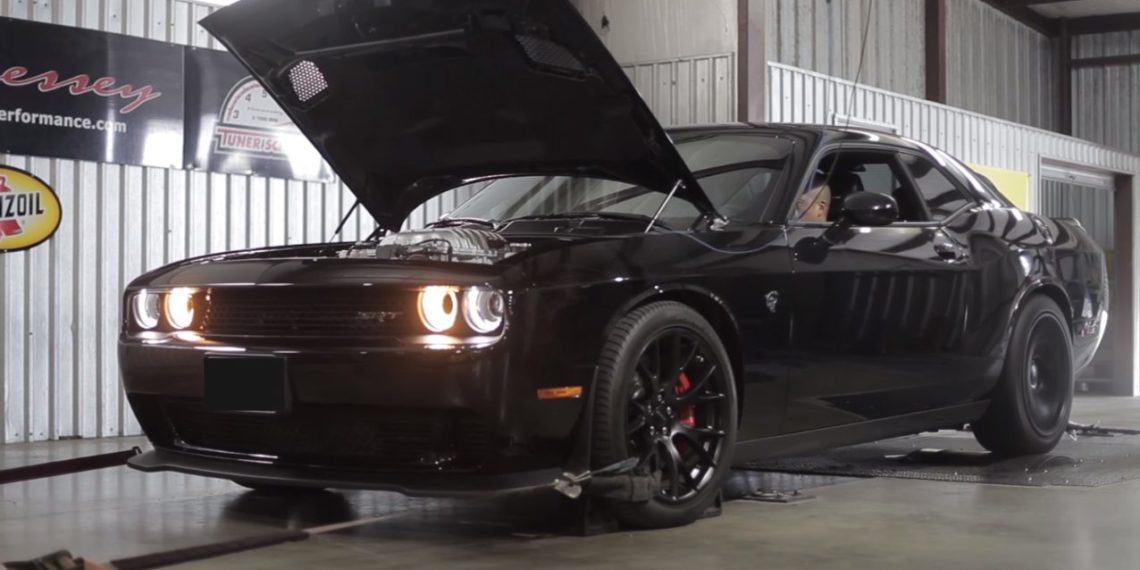You knew it was bound to happen. John Hennessey and team have added twin turbos to the supercharged Dodge Challenger Hellcat. Being the most powerful production muscle car, it makes 707 hp and 650 lb-ft of torque at the engine without any modifications. Automatic transmissions consume a percentage of that power in exchange for not having to shift your own gears. Our Cars & Coffee events are always packed with the mean Mopars, and owners tell us they usually make anywhere from 630 hp to 650 hp at the rear wheels when measured on a dyno. Incredible numbers for any showroom stock vehicle, but how does one boost that which is already boosted?
[soliloquy id=”106503″]
While tuned exhaust on naturally aspirated cars helps to build power at low RPMs, the exhaust on a supercharged car is essentially wasted energy. By adding two turbochargers into the mix, the Hellcat is taken from 11 to 15 pounds of boost pressure. Before you mention that it’s only 4 psi, consider how a supercharger works. It takes 500 hp just to spin the blower on a Top Fuel dragster. While that might be an extreme comparison, superchargers use a significant amount of the engine’s power- to make more power. I drove Mr. Hennessey’s twin-turbo Ford GT at the Orange County Auto Show in 2013, and he explained that by adding boost at low engine speeds, the supercharger’s inefficiencies are negated. Using the same logic on the Hellcat, they are able to make 848 hp at the rear wheels, 200 more with only 4 pounds of additional boost. Considering the power lost inside the automatic, it equates to 1,060 hp at the engine! Also available for the Charger Hellcat, head over to Hennessey Performance for more information.
Used Challenger SRT Hellcat
[youtube id=”vmNs8EhT_To” align=”center” mode=”normal” autoplay=”no” maxwidth=”750″ grow=”no”]





